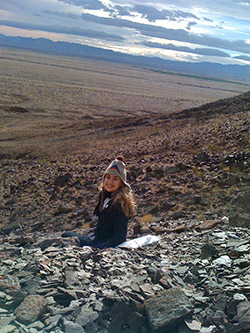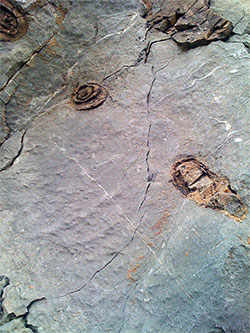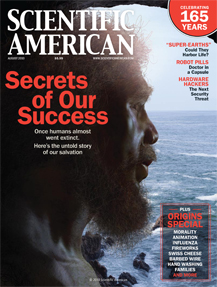A couple weeks ago, I participated in an online debate at Evolution News & Views with Center for Science & Culture fellow Michael Flannery on the question: “If he were alive today, would evolutionary theory’s co-discoverer, Alfred Russel Wallace, be an intelligent design advocate?” The following is my opening statement in the debate. A link to Flannery’s reply can be found near the end of this page.
The double dangerous game of Whiggish What-if? history is on the table in this debate that inexorably invokes hindsight bias, along the lines of “Was Thomas Jefferson a racist because he had slaves?” Adjudicating historical belief and behavior with modern judicial scales is a fool’s errand that carries but one virtue—enlightenment of the past for correcting current misunderstandings. Thus I shall endeavor to enlighten modern thinkers on the perils of misjudging Alfred Russel Wallace as an Intelligent Design creationist, and at the same time reveal the fundamental flaw in both his evolutionary theory and that of this latest incarnation of creationism.
Wallace’s scientific heresy was first delivered in the April, 1869 issue of The Quarterly Review, in which he outlined what he saw as the failure of natural selection to explain the enlarged human brain (compared to apes), as well as the organs of speech, the hand, and the external form of the body:
In the brain of the lowest savages and, as far as we know, of the prehistoric races, we have an organ…little inferior in size and complexity to that of the highest types…. But the mental requirements of the lowest savages, such as the Australians or the Andaman Islanders, are very little above those of many animals. How then was an organ developed far beyond the needs of its possessor? Natural Selection could only have endowed the savage with a brain a little superior to that of an ape, whereas he actually possesses one but very little inferior to that of the average members of our learned societies.
(Please note the language that, were we to judge the man solely by his descriptors for indigenous peoples, would lead us to label Wallace a racist even though he was in his own time what we would today call a progressive liberal.) (continue reading…)
Comments Off on Alfred Russel Wallace was a Hyper-Evolutionist, not an Intelligent Design Creationist
What does the democratic uprising in Egypt and other Arab nations have to do with IBM’s Jeopardy champion Watson in determining the fate of civilization? Think bottom up, not top down; think exponential growth, not linear change; think crowd sourcing, not elite commanding; and think open access and transparency, not closed entree and secrecy. Under the influence of these four forces, such seemingly unconnected events are, in fact, connected at a deeper level when we pull back and examine the overall trajectory of the history of civilization.
- Bottom up, not top down. Almost everything important that happens in both nature and in society happens from the bottom up, not the top down. Water is a bottom up, self-organized emergent property of hydrogen and oxygen. Life is a bottom up, self-organized emergent property of organic molecules that coalesced into protein chains through nothing more than the input of energy into the system of Earth’s early environment. Evolution is a bottom up process of organisms just trying to make a living and get their genes into the next generation, and out of that simple process emerges the diverse array of complex life we see today. An economy is a self-organized bottom up emergent process of people just trying to make a living and get their genes into the next generation, and out of that simple process emerges the diverse array of products and services available to us today. And democracy is a bottom up emergent political system specifically designed to displace top down chiefdoms, kingdoms, theocracies, and dictatorships.
- Exponential growth, not linear change. Science and technology have changed our world more in the past century than it changed in the previous hundred centuries—it took 10,000 years to get from the cart to the airplane, but only 66 years to get from powered flight to a lunar landing. Moore’s Law of computer power doubling every eighteen months continues unabated and is now down to about a year. Computer scientists calculate that there have been thirty-two doublings since World War II, and that as early as 2030 we may encounter the Singularity—the point at which total computational power will rise to levels that are so far beyond anything that we can imagine that they will appear near infinite. And not just in raw number crunching power but in cognitive processing ability, as witnessed in the difference between IBM’s Deep Blue chess playing master and IBM’s Jeopardy champion.
- Crowd sourcing, not elite commanding. Knowledge production has been one long trajectory of shifting not only from top down to bottom up, but from elite commanding to crowd sourcing. From ancient priests and medieval scholars, to academic professors and university publishers, to popular writers and trade publishing houses, to everyone their own writer and publisher online, the democratization of knowledge has struggled alongside the democratization of societies to free itself from the bondage of top down control. Compare the magisterial multi-volume encyclopedias of centuries past that held sway as the final authority for reliable knowledge, now displaced by individual encyclopedists employing wiki tools and making everyone their own expert.
- Open access and transparency, not closed entrée and secrecy. The Internet is the ultimate bottom up self-organized emergent property of crowd sourcing millions of computer users in an open access and transparent exchange of language, knowledge, and data across servers; although there are some top-down controls involved—just as there are some in mostly bottom-up economic and political systems—the strength of digital freedom derives from the fact that no one is in charge.
For the past 10,000 years humanity has gradually but ineluctably transitioned from top down to bottom up, from linear change to exponential growth, from elite commanding to crowd sourcing, and from secrecy to transparency. Together these forces are driving us to Civilization 2.0 on a scale I derived for classifying the rich array of human societies throughout history:
Civilization 1.1: Fluid groups of hominids living in Africa. Technology consists of primitive stone tools. Intra-group conflicts are resolved through dominance hierarchy, and between-group violence is common.
Civilization 1.2: Bands of roaming hunter-gatherers that form kinship groups with a mostly horizontal political system and egalitarian economy and utilizing sophisticated tools to extract what they could from relatively resource poor environments.
Civilization 1.3: Tribes of individuals linked through kinship but with a more settled and agrarian lifestyle with the beginnings of a political hierarchy and a primitive economic division of labor and employing mostly animal and human labor.
Civilization 1.4: Chiefdoms consisting of a coalition of tribes into a single hierarchical political unit with a dominant leader at the top, and with the beginnings of significant economic inequalities and a division of labor in which lower-class members produce food and other products consumed by non-producing upper-class members.
Civilization 1.5: The state as a political coalition with jurisdiction over a well-defined geographical territory and its corresponding inhabitants, with a mercantile economy that seeks a favorable balance of trade in a win-lose game against other states.
Civilization 1.6: Empires that extend their control over peoples who are not culturally, ethnically or geographically within their normal jurisdiction, with a goal of economic dominance over rival empires.
Civilization 1.7: Democracies that divide power over several institutions, which are run by elected officials voted for by a limited number of citizens as defined by race, gender, and class, with the beginnings of a market economy.
Civilization 1.8: Liberal democracies that give the vote to all adult citizens regardless of race, class, or gender, and utilizing markets that begin to embrace a nonzero, win-win economic game through free trade with other states.
Civilization 1.9: Democratic capitalism, the blending of liberal democracy and free markets, now spreading across the globe through democratic movements in developing nations and broad trading blocs such as the European Union.
Civilization 2.0: Globalization that includes worldwide wireless Internet access, with all knowledge digitized and available to everyone, a completely global economy with free markets in which anyone can trade with anyone else without interference from states or governments. A planet where all states are democracies in which everyone has the franchise.
Reaching Civilization 2.0 is not inevitable. As we are witnessing in Arab countries this month, resistance by nondemocratic states to turning power over to the people is considerable, especially in theocracies whose leaders would prefer we all revert to Civilization 1.4 chiefdoms. But by spreading liberal democracy and free trade, science and technology and the open access to knowledge through computers via the Internet will, in the words on a plaque posted at the Suez Canal: Aperire Terram Gentibus—To Open the World to All People.
Comments Off on Egypt, Watson & the Future of Civilization

click to enlarge photo
This past weekend, December 17–19, 2010, I joined paleontologists Donald Prothero from Occidental College and John Long from the Natural History Museum of Los Angeles County on a fossil hunting, rock hopping, geology viewing, petroglyph scanning excursion through the Mojave Desert between Los Angeles and Las Vegas. Through the entire trip I kept thinking “I wish the creationists and Intelligent Design theorists would try their hand at some actual field work because then they would see (and hear and smell and especially touch) what nature is really like and what the history of life reveals in the rocks, instead of sitting in an air-conditioned or heated office in some think tank building or school of theology department, trolling through published papers by real scientists who do this field work, trying to find some little gap that must be filled by the creating designer.
At this site (see photograph above), for example—a trilobite bed east of Amboy near Cadiz smack dab in the middle of nowhere (see what I mean on Google Maps)—we sat for hours with our hammers and collecting bags sifting through thousands upon thousands of shale pieces looking for that fossil gem, and finding a few here and there. These are 550 million year old creatures who once roamed through shallow seas but are now swimming in stone (in the elegant phrase of John Long, whose book by this title is a magnificent testimony to the power and beauty of paleontology). There is simply no denying evolution when you see it raw in the rocks (see especially Don Prothero’s book on proving evolution through the fossil record.
We also visited the coolest slot canyon I’ve ever seen, north of Las Vegas, off of Highway 168 (between Highway 93 and Interstate 15), down this miles-long dirt road that required four-wheel drive. This is Arrow Canyon, and the slot cut exposes a kilometer-thick Carboniferous to lower Permian succession, the upper part of a much thicker Paleozoic section ranging back to the Cambrian. The outcrop is nearly 100% exposed due to the arid conditions and sparse desert vegetation, enabling documentation of facies cyclicity and allowing beds to be traced laterally for hundreds of meters. (If you like it when I talk dirty this way I’m afraid that the credit goes to Don Prothero, whom I am quoting in this last sentence from his field guide for this trip!)
Check out the photo of our expedition group in the slot canyon, along with the photo of the tilted geological beds. There is simply no way that this slot canyon could have been cut through this hard rock in a flash (Noahian) flood, nor could these beds be laid down from ancient seas, compacted under extreme pressure and heat into layered beds, and then uplifted by slow geological forces into what we see today, all in only a few years of biblical times.
In the slot canyon, by the way, there were petroglyphs. Sadly, as you will see, some pinheads managed to find the canyon and decided to leave their mark on or around these ancient pictograms, thereby ruining them forever:

click the photo above to see both petroglyph images in this gallery
I did find something for the creationists to crow about. Check out the photograph (below) of a very ancient rock formation on the hike into that slot canyon. Here, embedded solidly on that rock, is a clear and unmistakable footprint with a clear demarcated heal! (I estimate about a men’s size 13.)

click to enlarge image
So there you go creationists, get in your four-wheel drive and head for Arrow Canyon, find that rock (it’s on the right side going into the canyon, about half way to the petroglyphs), photograph it, write up a paper about it, then submit it to the Journal of Young Earth Creationism. Alternatively, if Erich Von Daniken happens to be reading this, you can do the same thing but claim that it is evidence for alien visitation hundreds of millions of years ago. I think it was a Bruno Magli shoe. Adam (or Alien) had expensive taste.
If you are interested in geology tours, you won’t want to miss the Skeptics Society’s 7-day Alaskan Glacier Cruise. If you can’t make it to that tour, sign up to receive advance notification of future tours.
Comments Off on Fossil Hunting Without Creationists
Genome sequencing has revealed our common humanity
According to the late Harvard University biologist Ernst W. Mayr, the greatest evolutionary theorist since Charles Darwin, “species are groups of actually or potentially interbreeding natural populations which are reproductively isolated from other such groups.”
Reproductive isolation is the key to understanding how new species form, and many types of barriers can divide a population and split it into two different groups: geographic (such as a mountain range, desert, ocean or river), morphological (a change in coloration, body type or reproductive organs), behavioral (a change in breeding season, mating calls or courtship actions), and others. After isolation, if members of the split populations encounter one another and cannot produce viable offspring that can themselves later successfully interbreed and produce viable offspring (hybrids such as mules are infertile), then these two populations constitute two different species. (continue reading…)
read or write comments (58)
How free exchange between people
increases prosperity and trust
In his 1776 work An Inquiry into the Nature and Causes of the Wealth of Nations, Scottish moral philosopher Adam Smith identified the cause in a single variable: “the propensity to truck, barter, and exchange one thing for another.” Today we call this free trade or market capitalism, and since the recession it has become de rigueur to dis the system as corrupt, rotten or deeply flawed.
If we pull back and take a long-horizon perspective, however, the free exchange between people of goods, services and especially ideas leads to trust between strangers and prosperity for more people. Think of it as ideas having sex. That is what zoologist and science writer Matt Ridley calls it in his book The Rational Optimist: How Prosperity Evolves. Ridley is optimistic that “the world will pull out of the current crisis because of the way that markets in goods, services and ideas allow human beings to exchange and specialize honestly for the betterment of all.” (continue reading…)
read or write comments (1)







